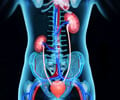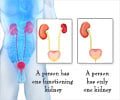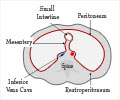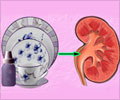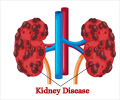US Kidney Failure Rates show Stabilization After 20-Year Climb
New research from the National Institute of Diabetes and Digestive and Kidney Diseases (NIDDK) of the National Institutes of Health have shown stabalisation of annual increases from 5 to 10 percent, rates for new cases of kidney failure. However worryingly there is still a dramatic racial disparity.
The average annual increase of kidney diseases has been less than 1 percent since 1999, compared to an average 5 percent in the previous decade In the year 2003, the rate for new cases of kidney failure was 338 per million population and was less than 2002.Diabetes and high blood pressure remain the leading causes of kidney failure, accounting for 44 percent and 28 percent of all new cases, respectively.
The most striking finding was for diabetes, where rates for new cases in whites under age 40 were the lowest since the late 1980's, in stark contrast to rates for their African American counterparts, which have remained constant.
"It's gratifying to see progress, however small, and to know that NIDDK activities undoubtedly have had a hand in that success," said Paul W. Eggers Ph.D., NIDDK's co-director for the USRDS. "But persistent disparities are sobering."
Some credit for this decline is to be given to the use in 1990s of angiotensin-converting enzyme inhibitors (ACE-inhibitors) and angiotensin receptor blockers (ARBs), which lower protein in the urine and are thought to directly prevent injury to the kidneys' blood vessels; and also to better control of diabetes and blood pressure.
NKDEP encourages early diagnosis and management by increasing awareness about:
Advertisement
Strategies proven to prevent or delay kidney failure
br> Estimating kidney function (eGFR) to find kidney disease earlier
Advertisement
br> Time-saving tools for health professionals at www.nkdep.nih.gov, including eGFR calculators that eliminate most of the work to estimate kidney function; and a letter template, which automatically calculates patient-specific eGFR, generates a list of next steps based on kidney disease stage and is designed to improve communication between kidney specialists and primary care physicians.
In 2003, nearly 537,000 people received dialysis or a kidney transplant. The cost to Medicare was $18.1 billion, with another $9.2 billion borne by private insurers and patients. Another 10 million people in the United States have earlier kidney disease; most don't know they have it, let alone that the disease increases the risk for premature death, heart attacks, strokes, and other problems.
"We could prevent or delay a lot more kidney failure, simply by using the box of tools that are already in the trunk," said Josephine P. Briggs, M.D., a kidney specialist and director of NIDDK's Division of Kidney, Urologic, and Hematologic Diseases.
NIDDK, part of the National Institutes of Health (NIH), conducts and supports research and education programs on kidney disease and diabetes, among others. Learn more about NIDDK programs and diseases at www.niddk.nih.gov.

